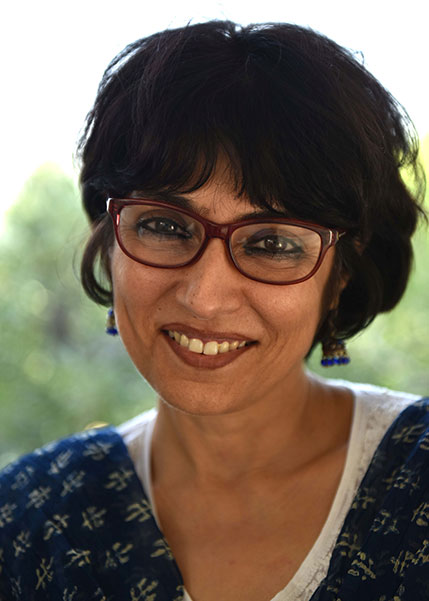

The empty frames of Grandfather Irfani or ‘Papaji’ in the mid-twentieth century may be a good place to begin this introduction. An avid photographer, Farjad Nabi’s maternal grandfather wore spectacles without lenses to avoid reflections when he was photographed by his family. Some seven decades later, those with glasses specially struggle with reflections again – a predicament created by the peculiar circumstances of this moment. This collection of three essays on personal archives is framed by the shadow of the Pandemic.
Twenty-twenty will be remembered as the year when nothing happened because we were confined to our homes. Except that the pause created by the lockdown offered new possibilities of expression and creativity as we looked inwards as well as outwards from within. At a moment of accelerated mortality, Suryanandini Narain sets the tone for what could constitute a memory archive for the future by discussing what she calls ‘pandemic imagery’ – works made by professional artists that focused on the home and the self in a moment of transition. Photographers like Sumiko Murgai Nanda and Maryam Eisler could be seen to conceptually draw from earlier bodies of collaborative portraiture but the nature of engagement with their subjects is now shaped through virtual and digital connections. The author contrasts this with the offline exhibition of Moutushi Chakraborty exploring a lost homeland just prior to the lockdown. Narain’s suggestion that the virtual has allowed us to enter hitherto private worlds without the physicality of travel is true for these intricate collages as well where the artist reworks orphaned family portraits through a painterly imagination. In this sense the borders between the virtual and the material may be more porous than we think.
Once upon a time family photographs never escaped the confines of the album. Today they travel the world virtually. This thematic runs through the next essay as well that explores how the internet especially acquired significance during the lockdown. Confined to their homes in Pakistan, the mobile phone and a WhatsApp group connected and engaged the elderly siblings of the Irfani family as they ruminated on scanned childhood photographs posted by Farjad Nabi. Their conversations throw light on the complicated nature of memory itself. Photographs are not memory; they trigger recollections that have little to do with what is in the frame. In black and white photos, Nabi’s mother recalls the colors of her dress and her brother at age six remembers the smells of the freshly varnished cricket bat of his father. Memory is also whimsical, ephemeral, fleeting, and conflicting. “Why are our childhood memories so clear?” asks Nabi’s uncle even as the siblings correct and contradict each other with detail and facts. There is wonderment at the marvels of technology as Nabi’s phone app returns color to their monochrome pictures. Stories about the banality of the everyday radiate outwards into a larger public world. We get glimpses of the life of this Punjabi family in cosmopolitan Iran that included the presence of the legendry singer and actor Googosh, holidays in the fin-tailed Plymouth, and Armenian friends. As a diplomat who rose from the ranks, Papaji had a ringside view of the heartbreaking and unfair trial of one of the country’s most loved leaders.
Unlike the Irfani siblings, who were physically separated, for others the lockdown provided a more intimate and intense access to the family. The third essay returns to a photographer, in this case also a son, who brings together two archives of family portraits, his mother’s pictures of his childhood and an ongoing project documenting the ailing bodies of his elderly parents. Sohail Akbar explores the oft quoted claim of mid-century Kodak advertisements of helping preserve memories, suggesting that these are more often than not perfect moments, as we do not want to be reminded of aging and vulnerability. The poignancy of this piece is marked by the knowledge of impending loss as Akbar compares the sunny yet contained nature of family albums of his childhood with the experience of being lost in endless transitory moments captured on his Smartphone during these months. Which memories would he choose to stay with from this image archive in the future?
Copyright © 2021, PhotoSouthAsia. All Rights Reserved.
Guest Editor
PhotoSouthAsia is honored to welcome Sabeena Gadihoke as Guest Editor. Here Gadihoke introduces her selected topic, which is addressed by her team of invited essayists:
Farjad Nabi: 700 Wings of Love
Sohail Akbar: Two Archives
Suryanandini Narain: Home Reimagined: Photographic Archives of 2020

Copyright © Sabeena Gadihoke
Sabeena Gadihoke is professor at the AJK Mass Communication Research Centre at Jamia Millia Islamia, where she teaches Digital Media Arts. She started her career as an independent documentary filmmaker and cameraperson and has written a book on India's first woman press photographer, Homai Vyarawalla, titled Camera Chronicles (2006).
A photo historian and curator, her most recent significant curatorial project was a retrospective of photographer Jitendra Arya, at the National Gallery of Modern Art, Mumbai and Bangalore, titled Light Works.
20 November